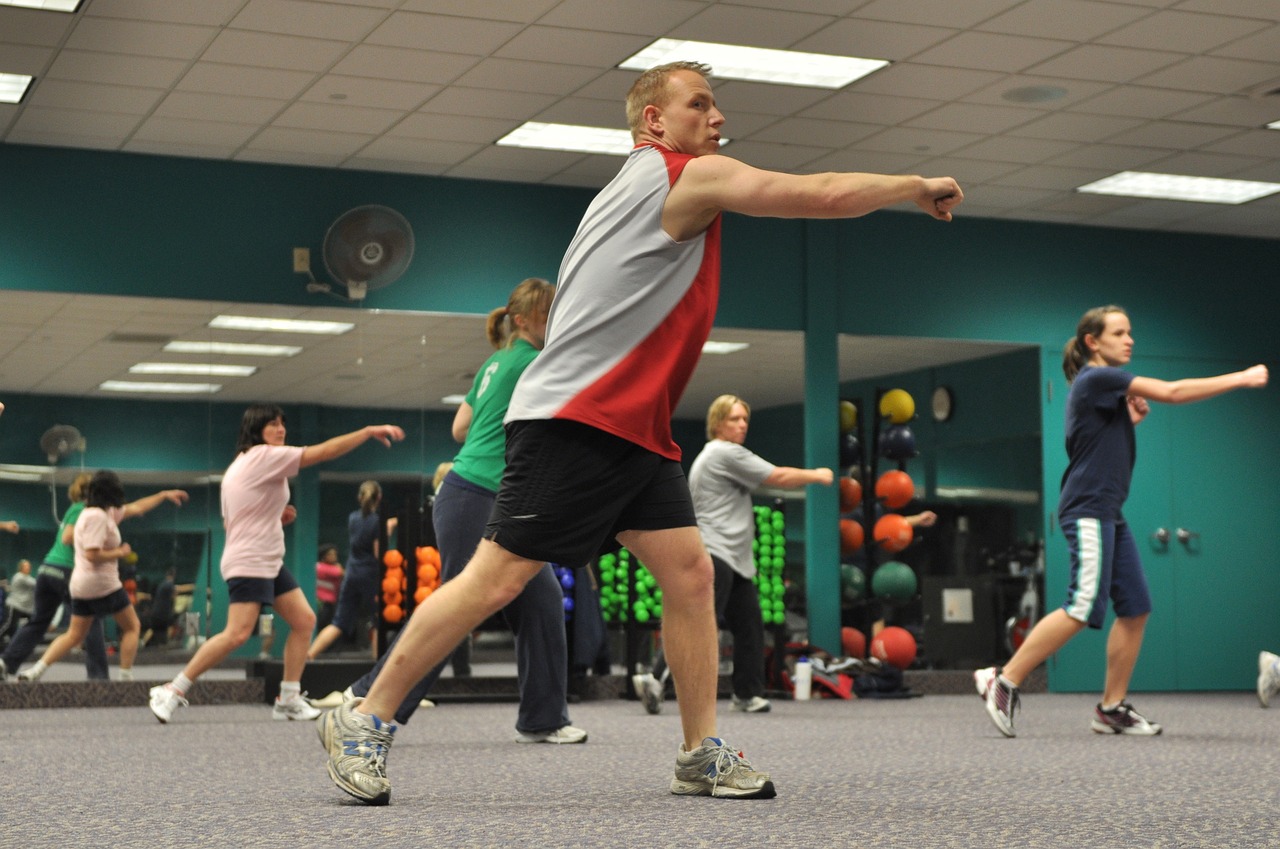If you’re dealing with herniated disc pain, there’s good news: Relief is within reach!
Focusing on safe exercises can be incredibly beneficial. By strengthening your core and boosting flexibility, you can alleviate discomfort while protecting your spine.
Top Exercises for Relief
Among the most effective routines are pelvic tilts, knee-to-chest stretches, and the cat-cow movement. These exercises target the spinal support muscles, promoting better mobility and easing pain. Plus, they can significantly enhance your posture.
Perform With Care
For the best results, it’s essential to execute these exercises with controlled movements and mindful breathing. This approach maximizes their benefits and minimizes any risk of further injury.
Consult the Experts
Before starting any new exercise regimen, consulting a healthcare provider is a smart move. They can offer personalized guidance, ensuring you avoid any activities that might aggravate your condition.
Discover Long-Term Benefits
Incorporating these exercises into your daily routine not only relieves immediate pain but might also unlock additional long-term benefits. You could find yourself feeling stronger and more flexible, enjoying a better quality of life.
By taking these steps, you’re not just managing pain—you’re investing in your well-being. Many before you have found success with these exercises, and they could be the key to your relief as well.
Key Takeaways
Looking to relieve pain from a herniated disc? We’ve got you covered with safe exercises that can help. Here’s how you can start your journey towards comfort and flexibility:
Seek Expert Advice First and foremost, it’s crucial to consult a healthcare professional. They can offer personalized exercise recommendations and ensure you’re practicing safely.
Strengthen Your Core Building core strength is vital for spinal stability. Simple exercises like pelvic tilts and abdominal bracing can effectively support your spine.
Ease Lower Back Tension Knee-to-chest stretches are excellent for reducing tension in the lower back while also enhancing flexibility.
Enhance Spinal Flexibility Incorporate cat-cow stretches into your routine. They are perfect for improving spinal flexibility and alleviating tension.
Breathe for Better Results Never underestimate the power of proper breathing techniques. They aid in muscle relaxation, making your stretching more effective.
Remember, these exercises are designed to support your journey to pain relief. Your feedback is invaluable, and we look forward to hearing about your experience.
Understanding Herniated Discs
Understanding Herniated Discs: A Path to Relief and Recovery
Herniated discs are a common spinal concern that many individuals face, often leading to significant discomfort. This condition arises when the soft inner layer of a spinal disc pushes through a crack in its tougher exterior. This can irritate nearby nerves, causing symptoms such as pain, numbness, or weakness in an arm or leg.
Recognizing these symptoms early is crucial. You might experience a sharp pain radiating down your leg or arm, accompanied by tingling or muscle weakness. Identifying these signs promptly can lead to timely medical advice and intervention.
Once symptoms are recognized, exploring treatment options becomes essential. Initially, doctors often recommend conservative methods. These may include rest, physical therapy, and pain medications to reduce inflammation and discomfort. Many individuals find relief with these approaches.
However, if symptoms persist, more advanced treatments might be considered. Options such as corticosteroid injections or even surgery may be explored. It’s important to weigh these options carefully with your healthcare provider, considering the severity of your symptoms and overall health.
Benefits of Safe Exercises
Discover the Transformative Benefits of Safe Exercises for Herniated Discs
If you’ve been dealing with the discomfort of a herniated disc, engaging in safe exercises could be a game-changer. Many of our satisfied customers have found significant relief by incorporating these targeted routines into their daily lives.
Why Safe Exercises?
The secret lies in focusing on specific muscle groups, which not only alleviates pain but also enhances mobility. Gentle movements help reduce spinal strain, encouraging healing and cutting down inflammation.
With consistent practice, these exercises can fortify your core muscles, providing much-needed support for your spine. This support is crucial for maintaining stability and proper alignment, something our customers rave about.
Enhanced Flexibility and Daily Ease
Our customers frequently note improved flexibility, allowing them to move freely without additional pain. This improvement makes daily tasks more manageable, ultimately boosting their quality of life.
It’s essential to select low-impact exercises specifically designed for those with herniated discs, minimizing the risk of aggravating the condition.
Mental Well-being: An Added Bonus
Beyond physical benefits, many of our customers report a boost in mental well-being. As pain diminishes, stress levels decrease, leading to a more positive outlook on their recovery journey.
Embracing a routine of safe exercises empowers you to manage symptoms effectively, paving the way for a healthier, more active lifestyle.
Join our community of satisfied customers who’ve transformed their lives by integrating these safe exercises into their routines. Experience the difference for yourself!
Precautions Before Starting
Embarking on a journey to incorporate safe exercises requires careful consideration and thoughtful planning. Before diving in, let’s prioritize some key precautions to ensure a positive experience and enhance overall satisfaction.
First and foremost, consulting with a healthcare professional is crucial. This personalized guidance helps tailor an exercise plan that aligns perfectly with your unique needs, offering peace of mind and reducing the risk of inadvertently worsening any conditions, like a herniated disc.
Pain management is another vital aspect to address. Understanding your pain levels and how they fluctuate can be incredibly insightful. Consider maintaining a pain diary to track your progress and pinpoint any triggers.
Should you experience increased discomfort during or after an activity, it’s wise to reassess and possibly consult your healthcare provider to refine your regimen.
Quality over quantity is a mantra to keep in mind. Opt for controlled, deliberate movements to avoid unnecessary strain on your spine. Always listen to your body—it’s your best guide in knowing when to modify or pause exercises.
Lastly, begin with gentle, low-impact activities to gradually build strength and endurance. By embracing these precautions, you’ll be well on your way to effectively managing your condition and working towards alleviating pain.
Here’s to a safe and satisfying exercise journey!
Pelvic Tilt Exercise
Looking to strengthen your core without putting unnecessary strain on your spine? The pelvic tilt exercise is an excellent starting point. It’s a gentle yet effective way to enhance pelvic alignment and core stability—perfect for those managing a herniated disc.
Here’s a simple guide to mastering the pelvic tilt:
- Get Comfortable: Begin by lying on your back. Bend your knees and keep your feet flat on the floor. Rest your arms at your sides. Ensure your spine maintains a neutral position, leaving a slight gap between your lower back and the floor.
- Engage Your Core: Draw your belly button towards your spine to gently tighten your abdominal muscles. This action not only stabilizes your core but also prepares you for the movement ahead.
- Execute the Tilt: Tilt your pelvis upwards to press your lower back into the floor. Hold this position for a few seconds, all while keeping your breath steady and relaxed.
- Return and Repeat: Gradually release the tilt and return to your starting position. Aim for 10-15 repetitions, focusing on smooth and controlled movements.
This exercise is straightforward and easy to incorporate into your routine. Many have found it beneficial for core strengthening and spinal health.
Give it a try and experience the difference for yourself!
Knee-to-Chest Stretch
Discover the soothing benefits of the knee-to-chest stretch, especially designed for those experiencing discomfort from a herniated disc. This gentle exercise not only eases lower back tension but also enhances flexibility, making it a favorite among our community.
Imagine a simple routine you can do right at home, without any special equipment! Start by lying comfortably on your back, perhaps on a yoga mat or a soft carpet. Bend your knees, keeping your feet flat on the ground. Remember, proper knee alignment is key: both knees should point directly upwards.
Next, gently draw one knee towards your chest, using both hands to guide it closer. Hold this position, all the while maintaining a steady, deep breath. Aim to hold the stretch for 15 to 30 seconds based on your comfort level. It’s important to keep the opposite foot flat on the floor throughout.
Once you’re done, switch to the other knee and repeat the stretch. Not only does this exercise stretch the lower back, but it also relaxes the gluteal muscles, which can get tight with a herniated disc.
Many of our users have shared that regular practice of the knee-to-chest stretch has significantly reduced their discomfort and improved their overall mobility. Join countless others who’ve found relief and flexibility with this simple yet effective stretch. Your journey to a more comfortable life starts here!
Cat-Cow Stretch
Discover the transformative power of the Cat-Cow Stretch, a favorite among our satisfied customers for promoting spinal flexibility and easing back tension.
This gentle exercise is designed to coordinate your breath with slow, deliberate movements, allowing you to gently stretch and contract your spine.
Many of our users have found it especially beneficial for encouraging a range of motion, which is crucial for those managing a herniated disc.
Not only does it alleviate stiffness, but it also boosts circulation, playing a significant role in enhancing overall spinal health.
Join the community of individuals who’ve experienced remarkable improvements, and see how the Cat-Cow Stretch can make a difference in your daily life.
Promote Spinal Flexibility
On the journey to find relief from a herniated disc, adding exercises that enhance spinal flexibility can make a world of difference.
One standout in our flexibility routines is the Cat-Cow stretch. This gentle sequence not only improves spinal mobility but also plays a role in reducing pain and enhancing overall movement.
Let’s dive into how you can seamlessly incorporate this exercise into your daily routine.
Step 1: Get Positioned
Start on all fours. Ensure your hands are directly under your shoulders and your knees are aligned under your hips.
This alignment is crucial for getting the most out of the stretch.
Step 2: Embrace the Cat Pose
Take a deep breath in. As you exhale, round your back towards the ceiling. Tuck your chin to your chest and draw your abdomen inward.
This movement stretches those back muscles, enhancing spinal mobility.
Step 3: Flow into the Cow Pose
Inhale deeply as you let your belly drop towards the floor. Lift your head and tailbone upwards.
This gentle arching fosters flexibility in your spine.
Step 4: Repeat and Relax
Alternate between the Cat and Cow poses for about 5 to 10 repetitions. Move slowly to maintain control and prevent any strain.
By regularly engaging in this routine, you can significantly boost your spinal flexibility.
This is a key step on your path to relief and improved well-being.
Alleviate Back Tension
Are you struggling with back tension, especially due to a herniated disc? You’re not alone, and there are effective solutions to help you feel better. One of the top-recommended exercises for alleviating back tension is the Cat-Cow Stretch. This simple yet powerful movement can significantly improve your back health and manage stress.
The Cat-Cow Stretch is a gentle exercise that loosens tight muscles and enhances spinal mobility. This helps reduce tension that could worsen disc issues. How do you do it? Start on all fours with your wrists aligned under your shoulders and knees under your hips. As you inhale, arch your back and lift your head and tailbone towards the ceiling—this is the Cow position. On the exhale, round your spine and tuck your chin to your chest—this is the Cat position. Gently repeating this sequence can be very beneficial for stress management and tension relief.
But don’t stop there. To truly support your spine, integrate ergonomic adjustments into your daily routine. Make sure your workspace encourages a healthy posture. A proper desk and chair setup can make a world of difference, reducing strain and supporting your spine.
Here’s a quick summary of this approach:
| Key Aspect | Description | Benefit |
|---|---|---|
| Cat-Cow Stretch | Alternates between back arch and round | Reduces tension and improves mobility |
| Stress Management | Mindful breathing during the stretch | Calms the mind and reduces stress |
| Ergonomic Adjustments | Proper desk and chair setup | Supports the spine and reduces strain |
Together, these exercises and adjustments create a healthier environment for your spine. Many have found relief and improved well-being by incorporating these practices into their lives. Consider trying them out—you might just find the comfort you’ve been searching for.
Seated Forward Bend
Discover the benefits of the seated forward bend, a gentle exercise designed to stretch your lower back and hamstrings. This practice not only relieves tension but also promotes better posture.
Maintaining proper posture is crucial to prevent strain on your spine. By focusing on correct form, you can enhance the effectiveness of this stretch.
We’ll guide you through common pitfalls, like overreaching, ensuring your practice remains safe and beneficial.
Let’s embrace this journey to improve your well-being through mindful stretching.
Proper Posture Techniques
When it comes to proper posture techniques, especially with exercises like the seated forward bend, maintaining alignment is key. This not only protects our spine but also ensures comfort and efficiency.
Let’s delve into how these techniques can be seamlessly integrated into our daily routines for optimal benefits.
Ergonomic Workspace:
Creating a workspace that supports a natural spine curve is crucial. Adjust your chair so your feet rest flat on the floor and your knees form a 90-degree angle.
Position your computer screen at eye level to prevent any neck strain. This setup encourages a healthier posture and enhances productivity.
Mindful Breathing:
Incorporate deep, mindful breathing while performing the seated forward bend. Inhale deeply through your nose and exhale slowly through your mouth.
This practice not only relaxes your muscles but also improves posture by promoting calmness and better oxygen flow.
Core Engagement:
Supporting your lower back starts with engaging your core muscles. Gently tighten your abdominal muscles without holding your breath.
This simple action helps maintain spine alignment and offers additional stability.
Gradual Movement:
When bending forward, take your time. Move slowly and deliberately to minimize the risk of sudden strain.
This approach allows your body to naturally and comfortably adjust to the position.
By incorporating these techniques into your daily routine, you can experience enhanced posture and overall well-being.
Stretching Benefits Explained
Discover the Transformative Benefits of the Seated Forward Bend
The seated forward bend is more than just a stretch—it’s a pathway to relief and rejuvenation. Many of our satisfied users have shared their positive experiences, particularly in easing discomfort from conditions like herniated discs.
When you engage in this versatile exercise, you’re not only stretching your muscles but also enhancing the flexibility of your spine and boosting overall circulation. This improved blood flow aids in reducing tension and provides significant pain relief.
Imagine sitting comfortably on the floor, extending your legs, and gently reaching forward. This controlled movement releases tightness in the lower back, offering immediate comfort. It’s a soothing way to begin your journey toward healing, as countless others have discovered.
Our community of users also highlights the importance of focusing on breathing during this stretch. This added mindfulness promotes relaxation and helps manage discomfort effectively.
Incorporating the seated forward bend into your routine could transform your posture and balance—key components for maintaining spinal health.
Remember, it’s important to listen to your body and practice with care to fully enjoy these benefits without overextending yourself.
Join the many who’ve found relief and enhanced well-being through this simple yet powerful stretch. Your path to a healthier, more comfortable life begins here.
Avoiding Common Mistakes
When it comes to the seated forward bend, understanding and avoiding common mistakes is crucial for a safe and effective stretch. This exercise can be incredibly beneficial, but only if done with proper form and awareness.
Let’s ensure you’re getting the most out of this stretch while avoiding unnecessary discomfort.
Maintain a Straight Back
A frequent error is prioritizing reaching further over keeping a straight back. It’s a common misconception that more reach equals more benefit. However, rounding your back can increase spinal pressure, which is something to avoid.
Focus on maintaining a straight alignment instead.
Progress Gradually
Avoid the temptation to overstretch. Pushing beyond your current flexibility can lead to muscle strain and worsen any disc issues you might have.
Remember, gradual progress is your friend. Take your time and allow your body to adapt.
Control Your Breathing
Breath control is often overlooked, but it’s essential. Holding your breath can create tension, making the stretch less effective.
Instead, focus on steady, controlled breathing to relax your muscles and support a safe stretch.
Listen to Your Body
Pain is a signal from your body that something isn’t right. Ignoring it can lead to injury.
Always pay attention to your body’s cues and stop if you feel discomfort during the exercise. Your body knows best, so trust it.
By keeping these points in mind, you can enhance your stretching experience and work towards your flexibility goals safely.
Happy stretching!
Strengthening Core Muscles
Strengthening our core muscles is a vital step in managing a herniated disc. By stabilizing the spine and reducing pressure on affected areas, we lay the groundwork for a healthier, pain-free life. When our core is strong, it acts as a solid foundation, supporting our spine during every movement.
Let’s focus on engaging these muscles properly. This ensures the stress on our spine is minimized, which can be key in alleviating discomfort. To start, incorporate exercises that specifically target the core, such as pelvic tilts and abdominal bracing. These exercises are gentle yet effective, allowing us to engage our muscles without overstraining them.
Pelvic tilts are simple: lie on your back and gently rock your pelvis. This motion activates the lower abdominal muscles. Abdominal bracing is equally straightforward—tighten your core as if preparing for an impact. This strengthens the deeper muscles that support the spine.
Consistency is crucial. Perform these exercises regularly to build strength gradually. As you progress, introduce more challenging movements like modified planks or bridges. Focus on maintaining stability and proper form to ensure the best results.
Final Thoughts
Discover the path to relief with safe exercises designed for herniated discs. Our focus is on easing pain and boosting mobility, allowing you to live life more comfortably.
Imagine these exercises as a gentle breeze that effortlessly calms a tense sail. When done correctly, they can significantly reduce discomfort. However, it’s crucial to proceed with care. Always prioritize your health and avoid any actions that might worsen your condition.
Incorporate the following exercises into your routine: pelvic tilts, knee-to-chest stretches, cat-cow stretches, seated forward bends, and core strengthening. Each of these exercises is a step towards a healthier, more comfortable life.
Remember, it’s always best to consult with a healthcare professional for tailored guidance. Get started today and take control of your well-being.










